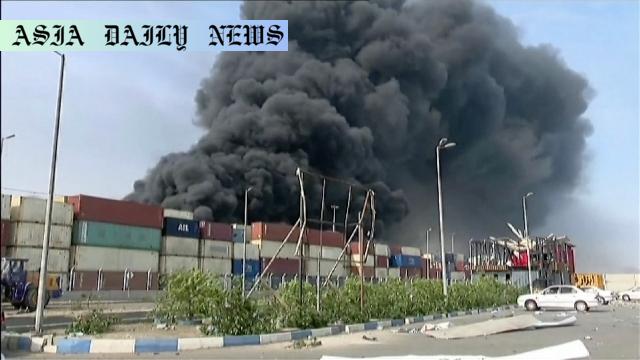Explosion: At least 46 killed and over 1,000 injured in southern Iran port blast attributed to chemical container mishap.
- Explosion in Iran’s southern port city of Bandar Abbas caused 46 deaths and over 1,000 injuries.
- Iranian government suspects chemical mishandling as the cause of the explosion.
- The Supreme Leader called for thorough investigations into any negligence or intent.
- Western media alleged missile fuel involvement, while Tehran denied military connections.

Fatal Explosion in Bandar Abbas, Iran
The southern port city of Bandar Abbas in Iran was struck by a devastating explosion on Saturday, leaving at least 46 dead and more than a thousand injured. The blast, as announced by Iran’s state-run media, led to massive destruction including building collapses and cargo fires in the vicinity.
Potential Chemical Mishap Suspected as Cause
Initial investigations by Iranian authorities suggest that the explosion was caused by the mishandling of chemicals stored in a container. However, the exact details remain vague, and authorities have launched a comprehensive inquiry to confirm the source of the blast. Iran’s Supreme Leader Ayatollah Ali Khamenei emphasized the need to investigate every aspect of the incident, urging security and judicial officials to identify negligence or intentional wrongdoing behind the tragedy, and to act in accordance with the law.
Reactions and Speculations
The incident has drawn international attention, leading to varied speculations. Some Western media have suggested that the explosion could have been the result of improper storage and handling of solid fuels intended for Iranian ballistic missiles. In response to these claims, a spokesperson for Iran’s defense ministry firmly denied the presence of any military-related shipments at the site of the explosion. Adding to the heightened tensions, Israeli media reported that officials confirmed Israel was not responsible for this tragic event.
Impact on the Local Community
The aftermath of the explosion has left a profound impact on the local community. Rescue operations are ongoing amidst rubble and fire, and medical teams are tirelessly working to treat over 1,000 people injured in the blast. Many individuals have been left trapped under collapsed buildings, complicating rescue missions further. The scale of property damage, coupled with the traumatic human toll, has left the residents of Bandar Abbas reeling from this catastrophic incident.
Key Learnings and the Way Forward
The Bandar Abbas explosion serves as a harsh reminder of the critical importance of safety procedures when handling hazardous materials. Whether negligence or intent played a role, both Iran and the global community have recognized the need to reinforce standards for storing and moving dangerous substances. With Iran working closely on the investigation, it aims to ensure accountability and prevent such events from recurring in the future.



Commentary
The Tragic Loss of Life and the Human Impact
The Bandar Abbas explosion has left an indelible mark on Iran, and the lives of many families have been forever changed. As reports of the death toll and injuries emerged, the sheer magnitude of human suffering became clear. The local community now faces the daunting task of healing both physically and emotionally from this catastrophic event. Such tragedies are a reminder to all societies of the profound need to prioritize safety and preparedness when dealing with dangerous materials.
Speculations and the Global Perspective
The international community has not been silent, as Western media raised concerns about the possibility of improper handling of materials linked to military programs. Yet, Iran’s dismissal of these claims highlights the sensitive geopolitical situation in the region. The fact that Israel quickly denied involvement speaks to the tensions that frequently accompany incidents in this strategically significant area. The global response, while mixed in its conclusions, illustrates the value of transparency and swift communication during crises of this nature.
Importance of Accountability and Safety
Perhaps the most pressing need in the aftermath of the explosion is a thorough investigation into the event’s causes. Ayatollah Khamenei’s directive to examine potential negligence or intent underscores the government’s commitment to accountability. However, it is not just about assigning blame; it is also about learning from mistakes to ensure that such a tragedy is not repeated. This incident should serve as a wake-up call for stricter regulations and stronger oversight in potentially hazardous industrial environments worldwide.
Moving Forward with Resilience
While the path ahead may be challenging, the resilience of the Bandar Abbas community should not be underestimated. As rescue efforts continue, stories of courage and survival emerge, offering hope in the face of devastation. With global attention turned towards Iran, there is an opportunity to foster dialogue and cooperation across borders to address the broader issue of industrial safety and crisis management. This tragedy, heartbreaking as it may be, could serve as a catalyst for positive change.